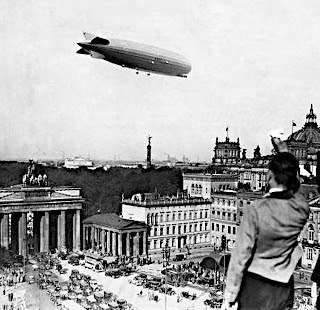Too many dollars chasing too few opportunities because of mispriced risk, so they are piling into short Term Treasuries again.
Grab something solid and hold on tight. Could be rough seas ahead.
Three Month T Bill Rates Go Negative On Concern Risk Rally Overdone
By Cordell Eddings
Nov. 19 (Bloomberg) -- Treasury three-month bill rates turned negative for the first time since financial markets froze last year on concern that the rally in higher-yielding assets has outpaced the prospects for economic growth.
Investors were willing to pay the government to hold their money as stocks slid amid speculation the eight-month, 68 percent rally that drove the valuation of the MSCI World Index to the most expensive level in seven years already reflects forecasts for a 25 percent rebound in corporate earnings next year. Federal Reserve Bank of St. Louis President James Bullard yesterday said experience indicates policy makers may not start to increase interest rates until early 2012.
“As long as the economy is stuck in a rut and there are not viable fixed-income alternatives, they will buy Treasuries,” said George Goncalves, chief fixed-income rates strategist at Cantor Fitzgerald LP, one of 18 primary dealers that trade directly with the Fed.
Rates turned negative on some bills maturing in January, according to Sarah Sobeck, a Treasury trader at primary dealer Jefferies & Co. The three-month bill rate was at 0.0051 percent, the least this year. Six-month bill rates dropped to the lowest since 1958. Treasury bills turned negative last December for the first time since the government began selling them in 1929 as investors scrambled to preserve principal and were willing to sacrifice returns in the months following the collapse of Lehman Brothers Holdings Inc.
The two-year note yield fell five basis points to 0.70 percent at 4:24 p.m. in New York, according to BGCantor Market Data. The 1 percent security due October 2011 rose 3/32, or 94 cents per $1,000 face amount, to 100 18/32. The yield touched 0.6759, the lowest since Dec. 19. It fell to an all-time low of 0.6044 percent on Dec. 17.
Don’t Dismiss
“Investors are preparing early for year-end and trying to ensure liquidity,” said Sobeck. “The move in the two-year resulted from the bid for collateral.”
Banks typically buy the safest maturities at the end of the year to improve the quality of assets on their balance-sheets.
Two-year yields rose yesterday following the comments from Bullard, who will be a voting member of the Federal Open Market Committee next year.
“The fact that he introduced the idea should not be dismissed as the ranting of a madman,” according to a report by senior economist Tom Porcelli and interest-rate strategist Christian Cooper at primary dealer RBC Capital Markets in New York. “Even the most bearish analysts weren’t talking about 2012 as a possibility. But the idea has just received credibility.”
Bullard’s comments followed a Nov. 16 speech by Fed Chairman Ben S. Bernanke in which he indicated that the central bank’s extended period of low borrowing costs may be even longer amid economic “headwinds.”
New Asset Bubbles
Bill Gross, who runs the world’s biggest bond fund at Pacific Investment Management Co., said the “systemic risk” of new asset bubbles is rising with the Fed keeping interest rates at record lows.
“The Fed is trying to reflate the U.S. economy,” Gross wrote in his December investment outlook posted on the Newport Beach, California-based company’s Web site today. “The process of reflation involves lowering short-term rates to such a painful level that investors are forced or enticed to term out their short-term cash into higher-risk bonds or stocks.”
The central bank lowered its target rate to a range of zero to 0.25 percent in December and purchased $300 billion of Treasuries this year as part of its effort to lower consumer borrowing costs and support the housing market, the collapse of which triggered the worst slump since the Great Depression....





























